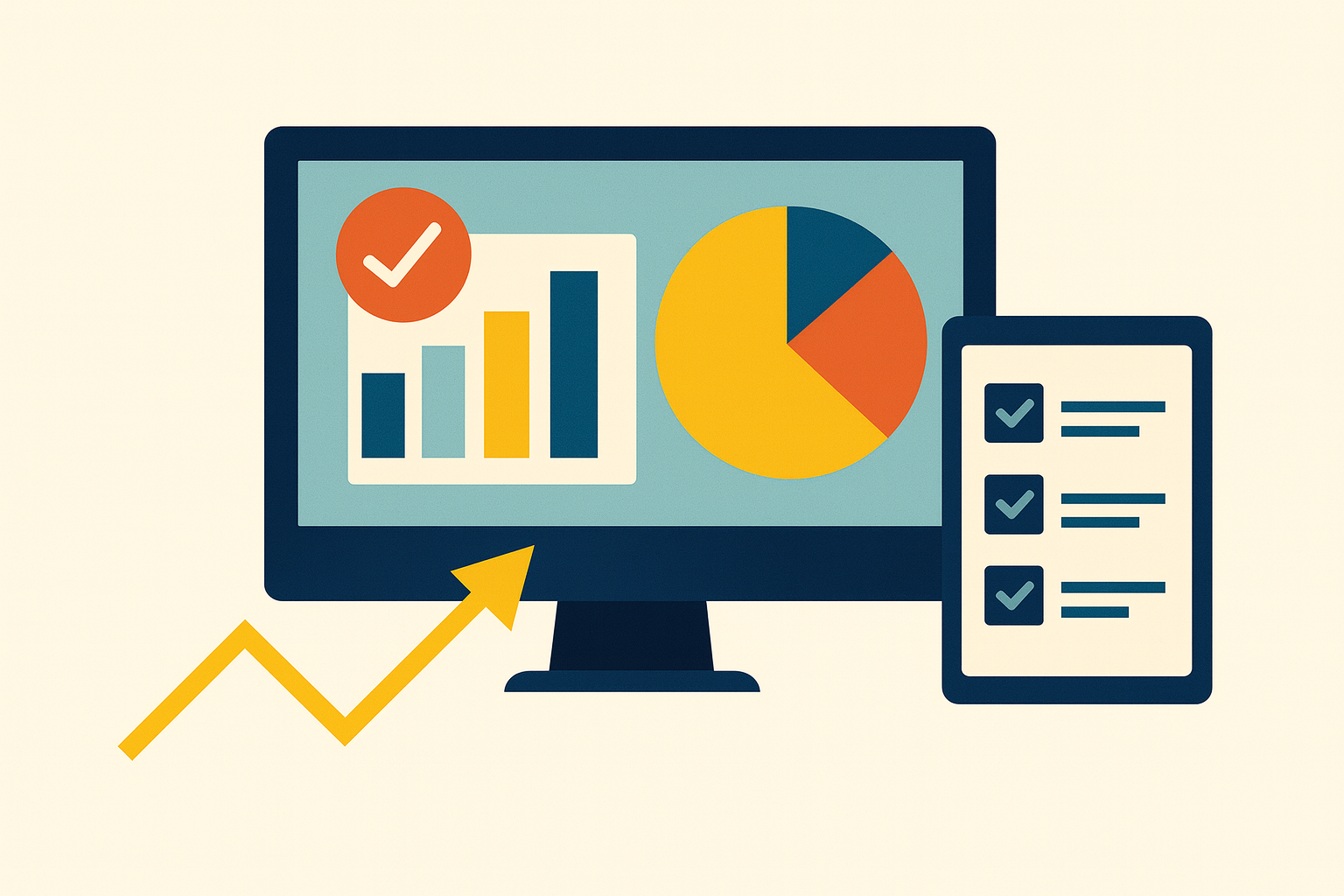Here’s what you should be looking for when thinking about updating your business systems
Updating your business systems is one of those things that’s easy to put off, but that you really do need to get on with as soon as you can. However, if your setup is working right now, even if you know it’s out of date, it’s tempting just to leave things as they are in an ‘if it ain’t broke, don’t fix it’ kind of way, and that’s especially true when you think about how long it can take to learn how to use new systems and software, as well as the expense involved.
But the truth is that the businesses that regularly review and refine their systems are usually the ones that move faster, stay more secure, and grow better. So how do you know what to look for when you’re thinking about an update? Read on to find out.
Know What’s Holding You Back
We’ll start with something that everyone can do right now - if you’re even thinking about updating your systems, it’s probably because you know something’s not working. Maybe your current tools are slow, or maybe they just don’t want to talk to one another. Perhaps they keep crashing at the worst possible moments, or your team has found a load of clever workarounds they have to use just to keep things running.
The fact is that none of that means you’re doing something wrong, it just means your business has grown, and your tools have got to catch up if you want things to go smoothly.
Before you make any decisions, it’s wise to spend a bit of time working out where the problems really are. One of the best ways to go about that is to talk to your team and watch how they use the current systems because that’s going to give you an idea of what’s working and what’s not. The goal isn’t to replace everything all at once, but instead you’re looking at what’s holding you back and focusing on that first. You can slowly but surely get everything else done once those problems are properly solved.
It’s Got To Integrate
It’s one thing to buy new systems, but it’s another one totally to make sure they actually fit together - but fit together they must! All too often, businesses end up with a load of disconnected tools, and it’s just going to mean everything is a lot harder to you. You might have one for managing customers, one for billing, one for scheduling, one for communication, and so on. And while each one might be great by itself, if they’re not joining together it can mean you’ve got to enter data more than once, or you end up with reports that don’t match, or there are just a lot of frustrating inconsistencies across all the departments, for example.
So when you’re looking for new systems, ask if it’s going to work well with what you already use - will it pull in the data you need automatically, and can it share information with the tools you rely on every day?
The more your systems match up, the more smoothly and successfully your business will run, and the more time your team can save, which is always something business owners should be looking out for.
Security Needs To Be A Priority
The more connected your business becomes, the more important it is to keep things secure, and that doesn’t just mean installing antivirus software or making employees change their passwords on a regular basis… it means taking a serious look at how your systems handle sensitive data like client details, payment information, employee records, and so on, and whether your current setup would be okay if someone tried to breach it.
It’s also about physical access. In a world where hybrid working is common and office security isn’t always at the top of people’s minds, systems like the Genetec Synergis access control system are helping businesses manage who can get in (and when) without having to rely on old-school keys or outdated badge systems. The right access control system can just work nicely without you having to do anything, and it’ll give the right employees easy entry while keeping unauthorised visitors out. And when it’s integrated with your business's systems, you get a complete picture of who’s accessing your spaces and why, which can be very helpful indeed.
You Should Think About Scalability
You might be running a small team right now, but what if things go well? What if you double in size next year? What if you open a second location or even expand internationally? You’re going to want systems that grow with you if and when all that happens.
Scalability means choosing platforms that won’t break down under the extra demand a growing business is going to put on them, which is ideal because then you won’t have to replace everything just because your customer base got bigger. And it means planning ahead and giving yourself a bit of breathing room for when you start to grow. That means you can focus on the growth and not have to panic about it.
Some of the best systems out there are modular by design, so you’ll start with the basics and then add more features or users as needed. That way, you only pay for what you need now, but you’re not going to be in a difficult position later, and you can let growth happens when it needs to.
Don’t Overcomplicate It
When you’re buried in all the information you’re going to want to look at to choose the right systems for your business, it’s easy to start thinking that more features automatically means better value, but it could just be that you’re making things more complicated than they need to be, and that can actually be limiting. And that’s especially true if your team ends up confused and overwhelmed and can’t do their jobs because the new systems you put in place are holding them back and complicating what should be a simple process.
The fact is that the best systems are intuitive, and they’re there to make people’s jobs easier, not harder. They don’t need hours and hours of training, and they’re built with real users in mind, not just IT experts and people who work with those systems for a living.
So when you’re picking software and systems to update your business, one of the key questions to ask is whether or not your team will actually use it (and use it in the right way). Plus, will it fit the way they already work or are they going to have to change things (which they won’t like, which will take ages, and which may not happen at all)? If the answer is no, you’ll need to think again.
Think About More Than Software
Business systems aren’t just about what’s on your screen - they include all kinds of things that tie together to make a whole. That includes the systems you use to onboard new workers, how customer complaints are handled, how decisions are made and reviewed, and so on.
So if you’re evaluating technology, it’s also a good idea to take a fresh look at the human side of your systems. Are there processes that slow everything down? Are approvals always left to one person who just doesn’t have the time to deal with them quickly enough? Are customers waiting too long for updates because no one knows who’s responsible?
You can solve a lot of problems by just adjusting how things flow, and that means you don’t have to get a loads more apps or software in place. It could just be you need to fix how things are done using the tools you’ve already got, and the people who already know what to do. If you can do that, it’s going to save you time, effort, and money, and it’s a great place to start at least.
Think About The Customer As Well
Internal systems are massively important, but don’t forget about how updates can affect your clients or customers as well - if an upgrade you make means your customers end up unhappy because things have changed in a more negative way for them, that’s going to be a problem.
When you’re reviewing new tools, think about how they’ll shape the customer experience - will it help with communication? Will payments be easier or more confusing? Will they feel more connected to your business or will it make things more impersonal (which you really want to avoid)?
In the end, better systems should be there to make things run more smoothly for everyone, including your customers, and if they do the opposite, they’re not the right ones for your business.
Final Thoughts
Updating your business systems is one of those investments that pays off when it comes to time saved, errors avoided, and frustrations reduced, but it’s also about setting the tone for your whole organisation, so if you’re building a business that’s ready to grow, it’s time to think about those upgrades sooner rather than later.































